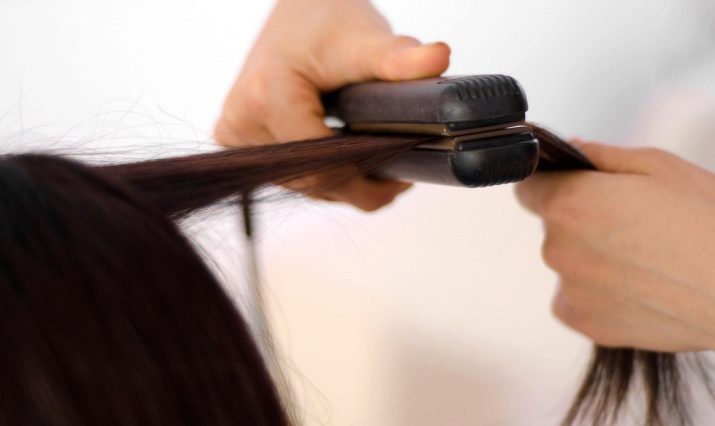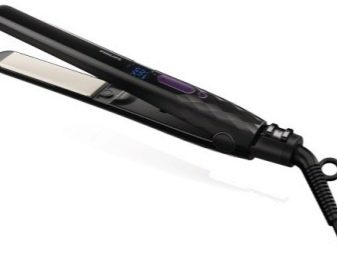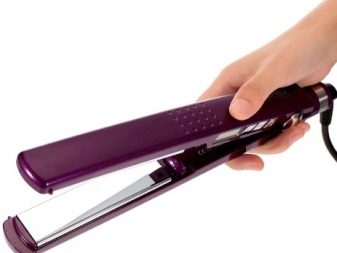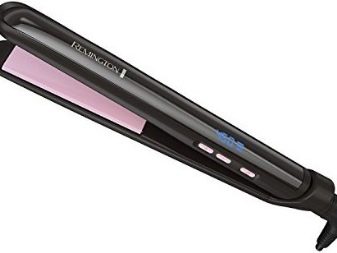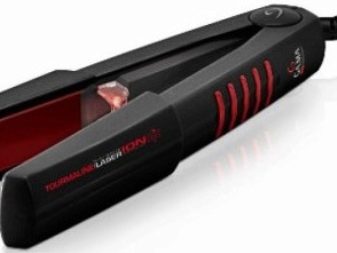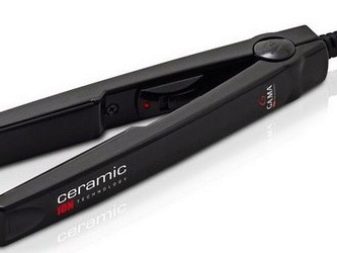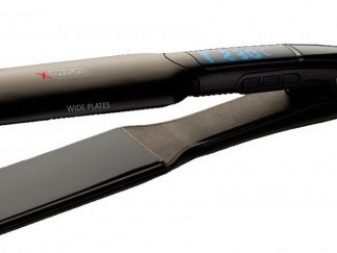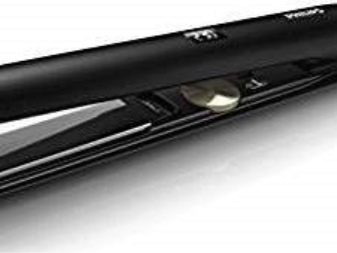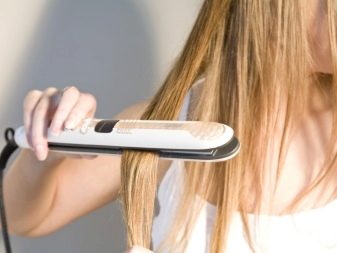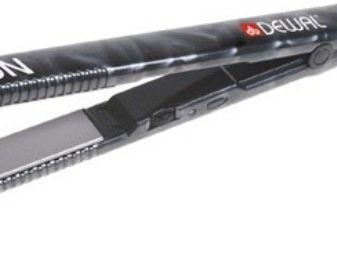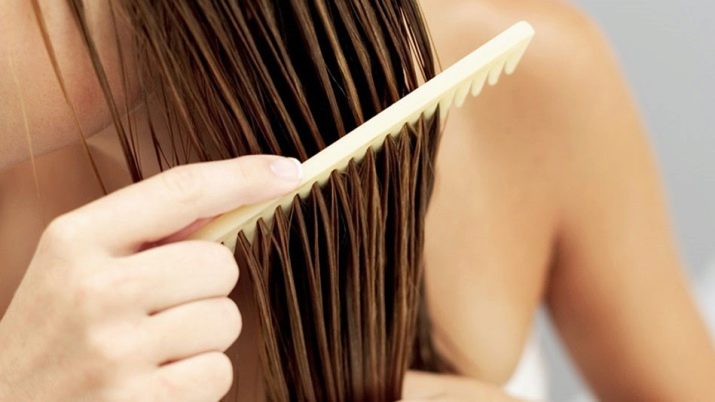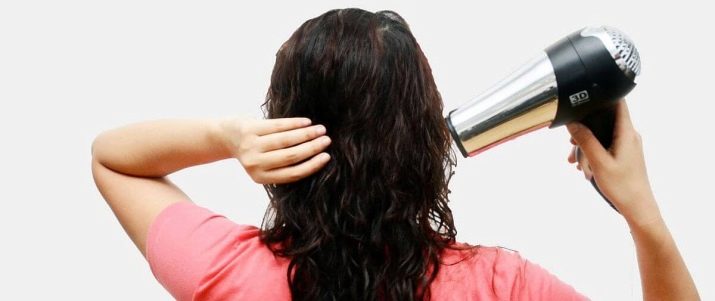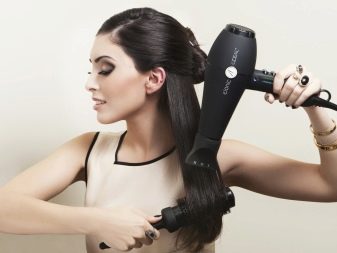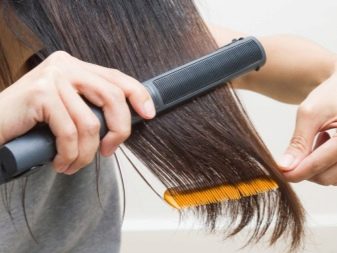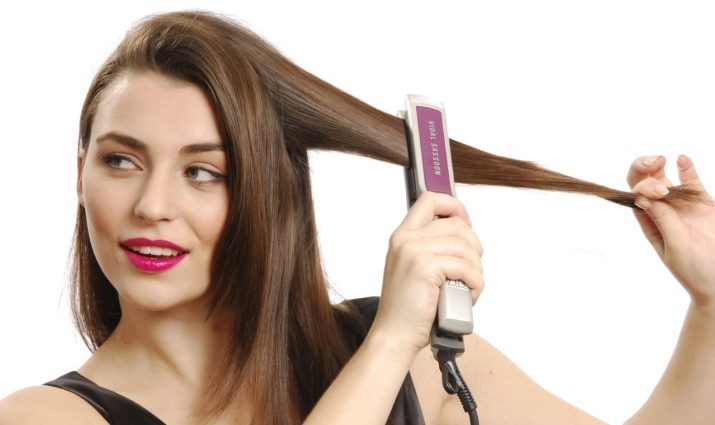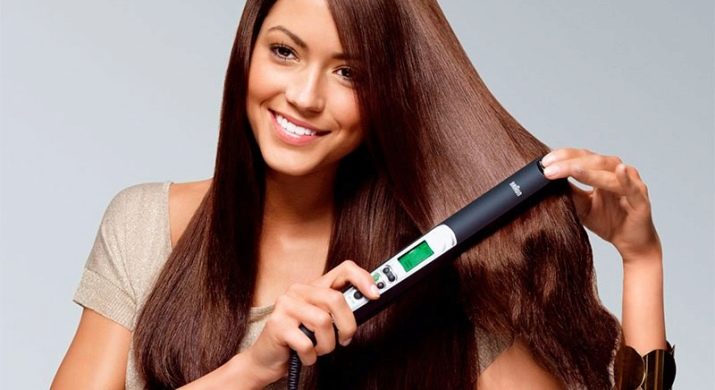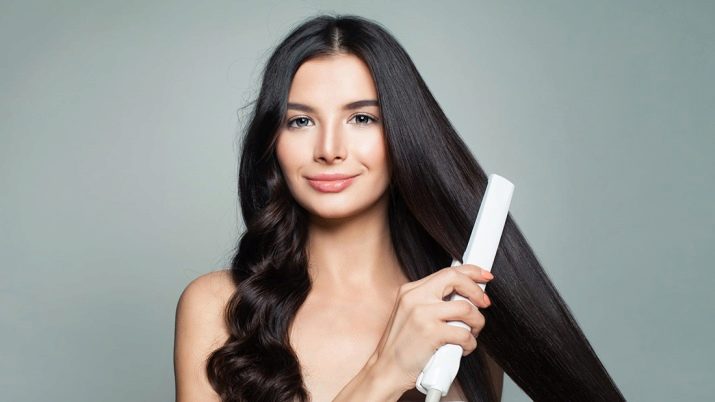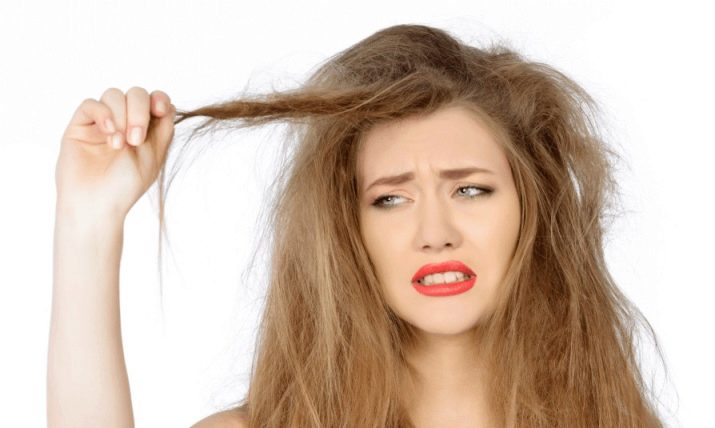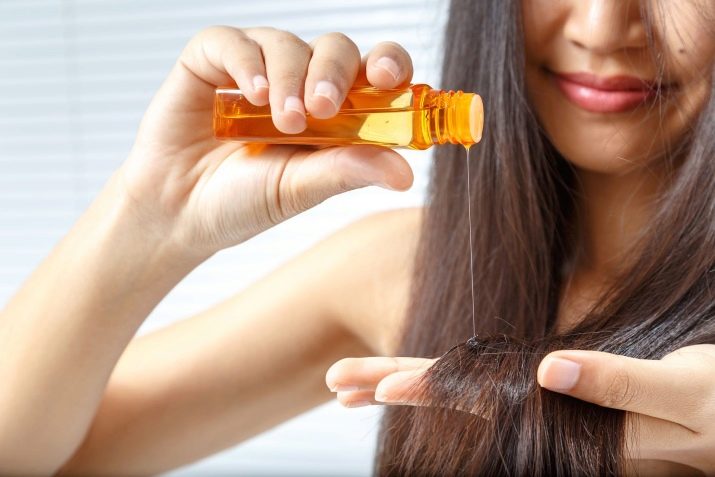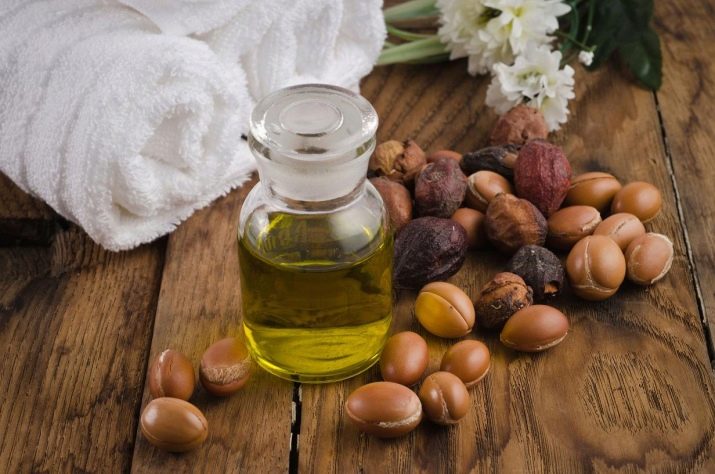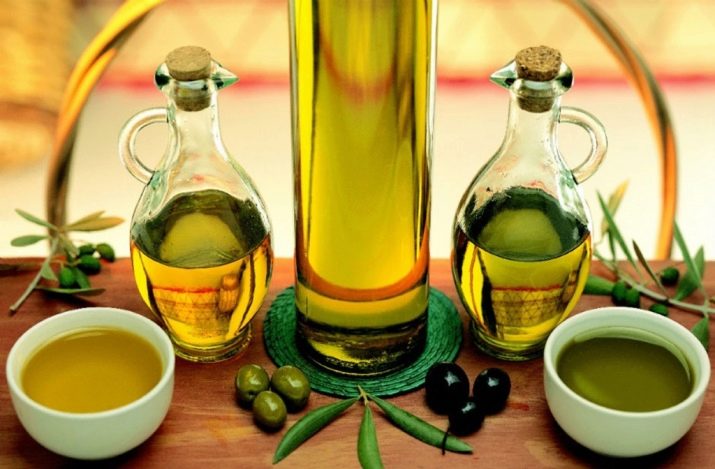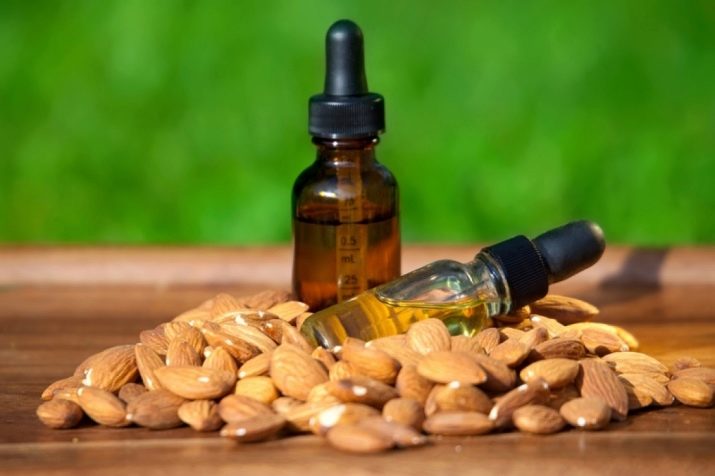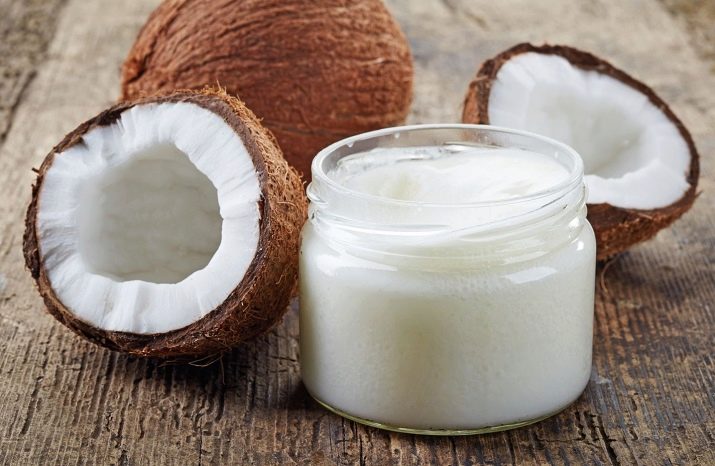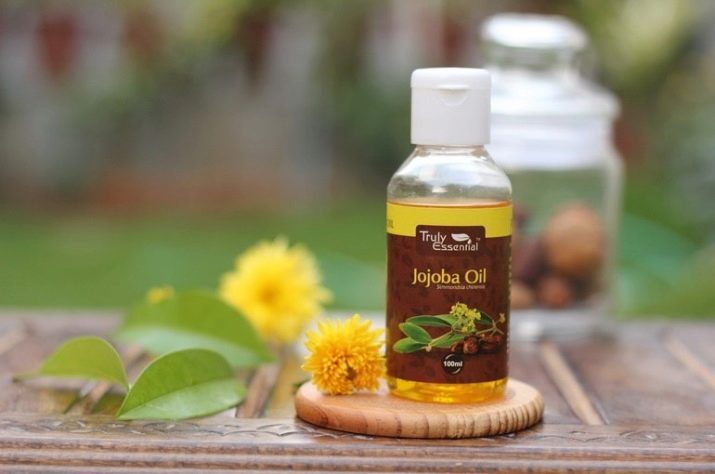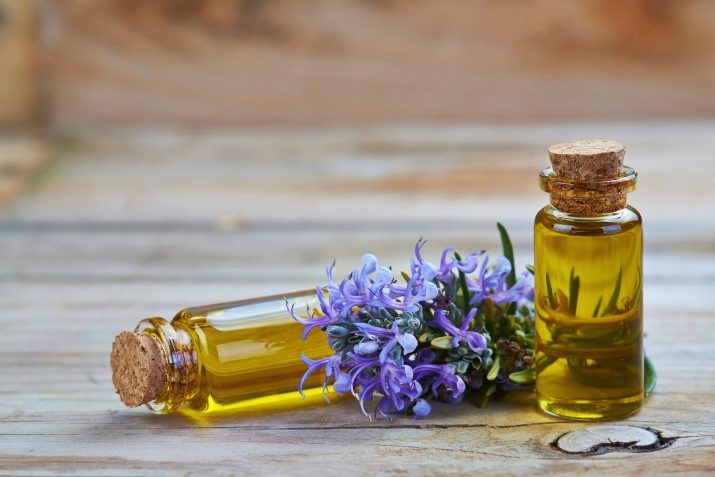One of the most popular ways to straighten hair in the home is to use a flat iron (straightener, styler, tongs). However, not everyone is familiar with the subtleties of working with him. The consequence of this may be overdried strands, their untidy appearance, insufficient efficiency of use of the device. Negative consequences can be avoided due to the correct choice of the iron and following the recommendations for its use.
Training
Choosing a rectifier is the main step towards a beautiful smooth hairstyle. It will depend on it:
- the effectiveness of this method of straightening;
- health of hair;
- usability;
- the ability to choose the optimal temperature;
- safety of use of the device.
There are different types of irons. The main thing to pay attention to is the material from which the plates are made. The functionality of the device largely depends on this. Consider the most common ones.
Metallic
This is the most budget option. However, it is dangerous to the health of hair. Metal plates in the device have uneven thermal conductivity. The result will be overdried, damaged strands. To minimize the negative impact of such an ironing is sufficiently impossible.
Teflon
These are metal plates coated with teflon. It provides easier sliding along the strands. They do not adhere to such material and have a healthier appearance after the procedure. Unlike metal plates, Teflon neutralizes static and leads to a more effective result. A significant drawback of these irons is a short service life, on average, 1 year.
Ceramic
Here it is necessary to distinguish plates with ceramic coating and all-ceramic. The first option is comparable to the plates with Teflon coating for properties and service life. The second option has become very common in terms of price - quality.
Ceramic rectifiers are always equipped with a thermostat. May have various useful functions, such as ionization or steam supply. Such devices will last for a long time depending on the quality of ceramics and assembly.
Tourmaline
These plates are made of ceramics with a tourmaline coating, which significantly improves the quality of irons. They do not need the ionization function, since tourmaline emit negatively charged particles when heated. This allows you to remove static.
The surface of tourmaline rectifiers is smooth, provides easy sliding. Laying tools do not stick to it. Featuring a gentle action, these irons are suitable for loose and dyed hair. Their cost is higher than ceramic, but a long service life justifies the cost.
Titanium
Titanium is the lightest and most durable metal. Plates of this material quickly and evenly heat up. They also neutralize static electricity. These irons do not have a detrimental effect and are effective in use.
Combined
These plates include titanium tourmaline, ceramic-marble and other types of irons. In the combined plates combine the best properties of various materials to achieve wear resistance and improve the quality of straightening.
When choosing, it is necessary to take into account the presence of a thermostat, the absence of sharp corners on the plates, mobility, smoothness and width of the plates depending on the length and structure of the hair. The greater the length, the wider the plates can be. For hard hair, it is better to choose a plate later for better processing. To straighten bangs and multi-level hairstyles, you also need to choose a straightener with narrow plates so that during the stretching no creases are formed.
Before you begin styling, it is important to remember that the wrong procedure will damage the hair. Straightening should be done on a clean and almost dry head. Dirty hair after the styler will look messy. The preparatory stage consists of two main points: washing and drying hair.
Washing head
It is necessary to thoroughly wash the hair, paying special attention to the root area, then apply conditioner. It is better if it has a smoothing property to facilitate further work. All products should be well rinsed in warm water to smooth the scales. After that, the hair must be slightly squeezed out with a towel and combed using a brush for damp hair.
Hair drying
You can dry your head naturally or with a hair dryer. It is better to refuse any styling products before straightening. When exposed to high temperatures, they begin to bake on the hair, damaging them.
The exception is thermal spray. It glues the hair plates and prolongs the effect of straightening. It is better to apply spray on wet hair before use of the hair dryer. So it is easier to distribute.
The main thing is not to dry the head at this stage. If you use a straightener for completely dry hair, then during the procedure he will begin to use the vital moisture from their structure. However, the procedure for wet hair is also not worth it, otherwise the impact of the device on them will be too long.
Hair should be wet after a hair dryer about 5%. This percentage is tactile to determine difficult. During drying, you need to control the humidity with your hand. At that moment, when the moisture ceases to be felt on the treated area, you need to stop the effect of the hair dryer. The residual excess water will remain and will not only minimize the impact on the health of the hair, but also help the iron to cope well with its task.
The whole preparatory stage should be reduced to ensure easy sliding of the iron and its short impact on the strands. Therefore, the hair to straightening need to be well prepared. Especially if you have to straighten curly locks. In this case, it is better to start pulling them while drying with a hair dryer using brushing.
As soon as the preparation stage is over, it is necessary to immediately proceed to straightening so that the excess moisture left is preserved.
Step-by-step instruction
The procedure can be easily performed at home itself. It is enough not to hurry, step by step performing all actions.
First of all, the hair must be properly fixed. If they are short, then you can collect them in two tails: at the back of the head and at the crown. If the hair is long, you can make one tail higher. The tail must be weak so that the strands can be pulled out easily. After that you should proceed to the main stage.
Straightening begins with the lowest strands near the neck. You need to move first horizontally until the bottom row ends, then climb a row above. The thickness of one strand on average is 3-4 cm. The straightener is carried out from the roots with a small indentation, so as not to burn the scalp and damage the hair follicles, to the tips. And so each row of strands is processed from bottom to top.
After using the styler on the root area, the hair will subsequently get dirty faster.Therefore, if the hair is naturally straight, and the styler is used to give it extra smoothness, then you can start straightening not from the very roots, but a little lower.
On curly hair, the transition will be noticeable, so you need to stretch the strands from the base.
The same recommendation is suitable for those who want to eventually get a hair with volume. In this case, owners of curly hair can not affect the root area on the inner strands of hair. And strand the upper strands from the roots with a safe minimum indentation.
To make the hairstyle perfectly straight and smooth, you need to hold the iron exactly in a straight line, without turning around its axis. The stiffer the structure, the thinner the strand should be. It is necessary to move slowly, not lingering in one place for more than two seconds. One strand is desirable to hold the styler no more than once. The tips of the hair can be slightly twisted - the hair will look natural.
In general, this installation is performed quite quickly, and the effect is very noticeable. But we must remember that this effect will quickly disappear in a humid environment. Rain, snowfall and even styling products or hair care products can quickly ruin a hairstyle. Especially if the nature of the hair curly.
In general, this procedure has become familiar and loved by many. It should be understood that there are no absolutely safe irons, and you need to take a responsible approach not only to its choice, but also to the technique of its use. One of the most important parameters that you need to pay special attention - is the temperature ironing, optimally suited to its type of hair.
Optimal temperature
For each type of hair has its own temperature range. For thin, weak or painted suitable heating temperature from 130 ° C to 160 ° C. Normal hair can be straightened at temperatures from 160 ° C to 175 ° C. For strong, hard, you can set the temperature from 175 ° C to 200 ° C.
Having chosen your range by structure, you need to start straightening along its lower boundary. If, for example, a strand of thin hair at 130 ° C is effectively smoothed, a further increase in temperature is not required. If the result is insufficient, it is worth adding the temperature by one step of the thermostat. And so you can move in your range until the most acceptable mark is selected.
It is worth noting that the higher the temperature, the stronger the effect and speed of rectification. Therefore, the temptation to set the temperature above is quite high. But even a slight excess from a sufficient mark affects the condition of the hair. And since the procedure is not absolutely safe, you should not expose the hair to the greater test.
Having chosen the safest temperature for the hair, knowing the technique of working with the styler, it is important not to forget about the safety technique when using it.
Safety
The rules for using the iron include both general requirements for electrical appliances and separate recommendations that minimize its negative impact on the hair. The list includes a number of items.
- Do not allow water to enter the iron.
- It is necessary to protect it from children.
- Do not touch the hot parts. If necessary, you can use a thermal protective glove.
- Laying the device can only be on a heat-resistant surface.
- It is impossible to leave the rectifier switched on unattended.
- It is not recommended to use the iron on the maximum temperature.
- After each use, wipe it first with a damp cloth and then with a soft, dry cloth.
- Do not wind the cord around the appliance. It is necessary to periodically check its serviceability.
- It is undesirable to use the rectifier frequently. It is recommended to straighten their hair no more than once a week.
In addition to the rules for the operation of the device, there are recommendations for the care and restoration of hair after the procedure.
Hair care after the procedure
After exposure to hair of high temperatures, they inevitably lose their vitality, become more vulnerable. Therefore, you need to protect them from additional negative external influences. Among them, have a harmful effect:
- direct sunlight;
- chlorinated water;
- aggressive substances in the composition of hair care products;
- metal brushes and hairpins;
- tight hair;
- aggressive styling;
- diets;
- procedures for changing the appearance of the hair, for example, coloring, lamination.
The market offers a wide range of hair restoration products. It must be remembered that many of them only mask the problem, but do not have a beneficial effect on the hair. In order not to aggravate the situation, it is necessary to get acquainted with their composition. Among the various tools masks and oils have proven themselves well.
Masks can be mixed from natural products at home. This is an economical care option without harm to the hair. Among the ingredients most often used are egg white or yolk, honey, decoctions of herbs (chamomile, calendula, burdock and others), kefir, brandy, tincture of paprika. Well proven capsules with vitamins A and E, which in the amount of two drops added to the selected mixture.
Particular attention should be paid to oils. They are applied to half the length of the hair or on the ends, added to cosmetic hair care products and homemade masks.
The most effective for hair are several types of oils.
Argan
This oil is designed to restore hair after curling, straightening. It nourishes the hair with antioxidants, returning them a healthy look. In addition, it has a firming effect and prevents the formation of dandruff.
Olive
Due to the content of vitamins and phenols, olive oil has a nourishing and regenerating effect on the hair structure. It is recommended to use for dry, brittle hair. In addition, it has a beneficial effect on dry scalp.
Castor
The oil is able to penetrate deep into the hair, nourishing and restoring it from the inside. This action is possible due to the content of fatty acids in its composition. A distinctive feature of castor oil is the ability to enhance hair growth.
Burdock
Burdock oil has a pronounced moisturizing effect. It smoothes the disobedient strands and protects the hair from adverse external influences.
Almond
This firming oil can not only improve the appearance of the hair, but also contribute to their growth, elasticity and shine. It slows down cell aging and has an anti-inflammatory effect on the scalp.
Coconut
The oil is intended primarily for dry and lifeless hair. It returns their brilliance and strength. In addition, it has an antimicrobial effect, relieving inflammation and itching on the scalp.
Jojoba
Moisturizing and nourishing oil is rich in vitamins. It is suitable for all types of hair, strengthens their structure and stimulates growth. It can often be seen in the composition of various cosmetics.
Rosemary
The oil is known for its cleansing and firming action on splitting and damaged hair. It prevents their loss and is often used in combination with other oils.
With constant care and careful handling, you can keep your hair in good condition even with a weekly styler. And although in the fashion strict geometry of the lines in the hairstyle, and women are increasingly resorting to using styling devices, first of all you need to remember the grooming of the hair. Any hairstyle is variable. Always up-to-date and beloved by many kare, for example, looks beautiful in a smooth and wavy, slightly sloppy form.
A flexible attitude to fashion and a responsible attitude to yourself will allow for a long time to preserve the beauty and health of hair.
How to straighten hair with a flat iron, see the video below.


